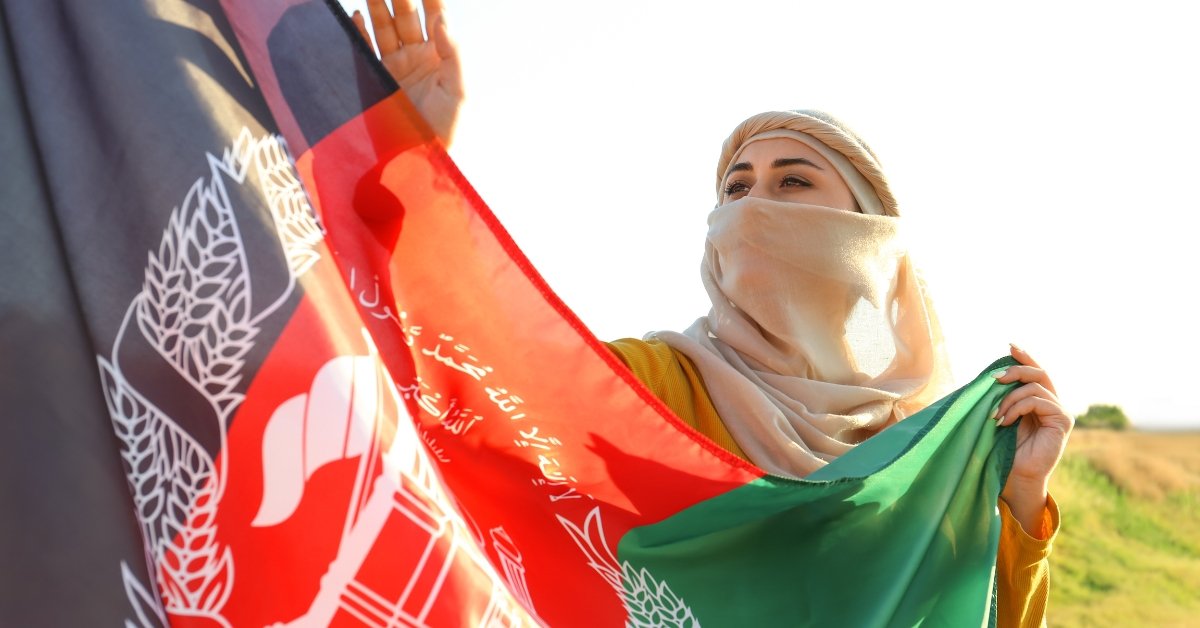Since the Taliban regained control in Afghanistan, Afghan women have faced harsh restrictions on education, freedom, and mobility.
Table of Contents
Introduction
When the Taliban regained control of Afghanistan in August 2021, the world watched with a mix of shock and concern.
For Afghan women, it was not just a change in government—it was a devastating blow to their freedom, rights, and futures.
In the past two years, the Taliban has imposed one restriction after another, targeting nearly every aspect of women’s lives: from education to work, from social spaces to their voices themselves.
The world now finds itself facing what many human rights groups call “gender apartheid” in Afghanistan.
The situation may seem dire, but Afghan women are not giving up. Many are fighting back with courage and resilience, using their voices to demand the rights stripped from them.
This article delves into the grim reality for Afghan women today, the incredible strength they continue to show, and the international response that’s emerging.
Education and Employment Restrictions
One of the first actions the Taliban took was to block Afghan girls from attending school past the primary level.
Secondary schools and universities shut their doors to Afghan girls, abruptly ending dreams of education and future careers.
For Afghan women who were already part of the workforce, the Taliban’s policies have forced many of them out of their jobs, confining them primarily to healthcare and limited educational roles—if they are allowed to work at all.
This drastic shift in education and employment policies has reversed decades of progress.
Women are now excluded from workplaces and universities, with little to no options left for personal or professional growth.
The denial of education not only impacts these women today but also threatens the future of Afghan society.
Without educated women contributing to society, the country’s growth and stability are at risk.
Public Life and Mobility Constraints
Stepping outside has become an ordeal for Afghan women, who now face strict dress codes and mobility rules.
Full-body coverings like the burqa are mandatory in public spaces, and women cannot travel beyond 45 miles without a male relative.
Imagine having to ask permission and find a chaperone to visit family in a nearby town.
Adding to these restrictions, public spaces like parks, gyms, and even public baths are now off-limits to women.
This leaves Afghan women isolated and barred from engaging in the most straightforward social activities.
What was once normal—going for a walk in the park, meeting friends for exercise—has now been completely erased from their lives.
The Taliban’s rules aim to keep women confined, limiting their ability to move freely, participate in society, or even catch a breath of fresh air outside their homes.
Suppression of Speech and Assembly
In a sweeping decree, the Taliban recently banned women from speaking in public, claiming their voices are “awrah” or something to be concealed.
This restriction is part of a more significant effort to silence Afghan women entirely, to remove their presence and participation from society.
Afghan women are not allowed to gather, protest, or speak up about these injustices.
Those who dare to defy these rules face severe consequences, from harassment to violence.
Afghan women who try to protest are putting themselves in grave danger.
In many cases, women who have peacefully demonstrated against these restrictions have faced arrests, violence, and even disappearance.
However, despite the risks, these women’s courage is remarkable, a reminder that resistance persists even under the harshest conditions.
International Response and Legal Actions
The world has not stayed silent on these actions.
Human rights organizations around the globe are speaking out, calling the Taliban’s restrictions on women’s rights “gender apartheid” and urging world leaders to take action.
Countries like Australia, Canada, Germany, and the Netherlands have gone as far as taking the Taliban to the International Court of Justice, demanding accountability for these human rights abuses.
Legal actions and sanctions are critical, but the situation remains challenging.
Humanitarian aid is often blocked or restricted by the Taliban, complicating efforts to support Afghan women in any meaningful way.
The international community’s response is clear: the world sees and condemns these actions.
However, Afghan women need more than words; they need practical support to change their reality.
Ongoing Resistance from Afghan Women
Despite facing harsh repression, Afghan women are refusing to back down.
Activists like Wahida Amiri and Nayera Kohistani have become symbols of resistance, courageously standing up against the Taliban’s restrictions.
They have organized protests, led hunger strikes, and voiced their demands for their rights—even as the Taliban continues to try to silence them.
These brave women know the risks they are taking.
For them, speaking out is not just about fighting for their rights; it is about fighting for the future of every Afghan girl.
Afghan women are showing the world that, no matter how severe the oppression, the spirit of resistance is alive.
Their courage is a powerful reminder of Afghan women’s strength and resilience, and it is a call for the world to stand with them.
Recent Developments in Women’s Rights Under Taliban Rule
Just when it seemed things could not get worse, the Taliban introduced even stricter policies.
In a recent decree, Afghan women have been forbidden from speaking to each other in public, reinforcing what the international community is calling a “system of gender apartheid.”
These policies isolate Afghan women even further, stripping them of not only their public voices but also their right to connect.
Reports from The Times and the New York Post reveal a devastating reality for Afghan women.
With each passing day, these restrictions deepen, and Afghan women are pushed further into the shadows.
For many, the new laws feel like a deliberate attempt to erase them from society, and it is a somber reminder of how much Afghan women have lost under Taliban rule.
Conclusion
The reality for Afghan women under Taliban rule is bleak.
These restrictions on education, employment, public life, and even fundamental freedoms are an alarming rollback of women’s rights.
However, in the face of these crushing conditions, Afghan women continue to stand firm.
Their resilience, their bravery, and their voices have inspired people around the world to take notice.
The international community’s role in this crisis is critical. Legal actions, diplomatic pressure, and humanitarian aid are needed more than ever to support these women.
Afghan women are showing the world that, even in the face of overwhelming oppression, they will not give up on their rights.
As we continue to follow their stories, it is clear that they need more than our sympathy—they need real action: every voice, every call to action, every show of support counts.
Afghan women have shown the world what true courage looks like.
It is up to us to stand with them in their fight for freedom and justice.
Trivia
Did You Know? Afghanistan granted women the right to vote as early as 1919, years before many Western nations. This early progress is a stark contrast to today’s severe restrictions, making the fight for Afghan women’s rights a powerful reminder of the gains that can be lost—and the importance of protecting those freedoms.






